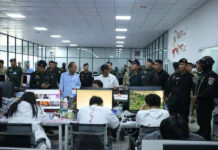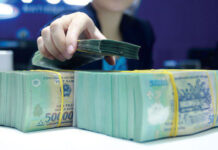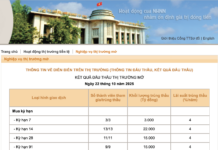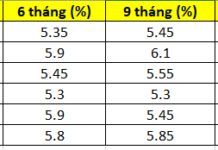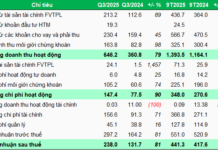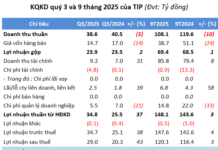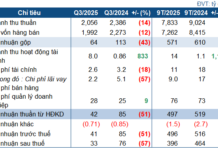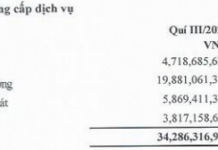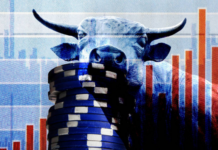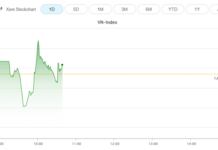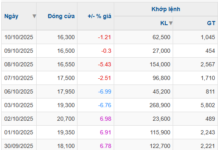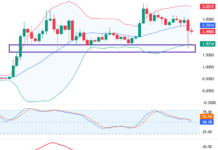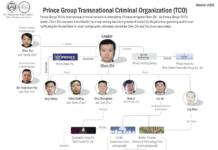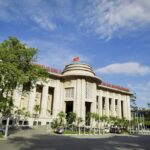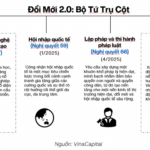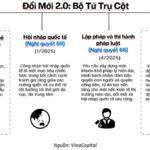Historical Turning Point
Mr. Nguyen Thi Huong, Director of the Statistics Bureau, Ministry of Finance, argued that since the renewal process began in 1986, Vietnam has achieved important socio-economic milestones. The country has escaped underdevelopment and become a dynamic, rapidly integrating middle-income developing country with a market economy. The economy has grown quite high, continuously and inclusively, ensuring that all people benefit from the development process.
After nearly 40 years, Ms. Huong said that the country’s economic scale has increased nearly 106-fold, reaching $476.3 billion in 2024, ranking 33rd in the world. Per capita GDP also increased more than 63 times, reaching $4,700. The average growth rate in the period 1987-2024 reached 6.67%/year, putting Vietnam in the group of high-growth countries in the region and the world.
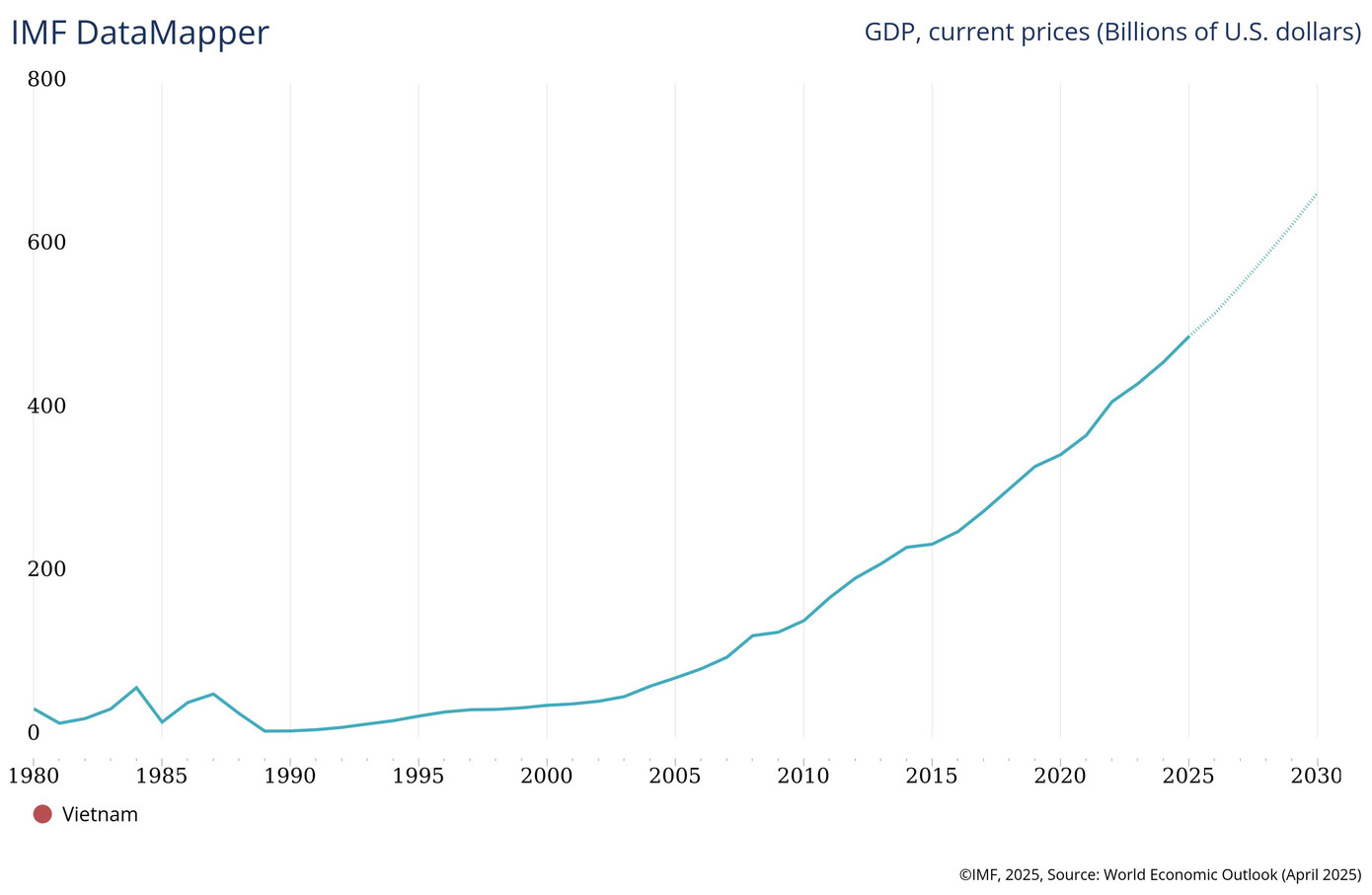
Vietnam’s GDP scale over the past 40 years, according to data from the International Monetary Fund (IMF).
According to Ms. Huong, Vietnam’s economic structural transformation has gone through many different historical stages, bringing about tremendous efficiency.
In the period 1986-1990, the beginning of the renewal process, the Vietnamese economy faced a triple-digit inflation crisis. Market-oriented reform policies, especially the breakthrough policy on agricultural and rural development and the promulgation of the Foreign Investment Law in 1987, gave a great boost. This is also the period when the Party identified three key economic programs, considering agriculture as the top priority, light industry and handicraft industry as important, while developing heavy industry selectively. Thanks to that, the economy gradually stabilized, and by 1990, the GDP scale was 7.3 times higher than in 1986, paving the way for higher growth in the period 1991-2000.
After overcoming the crisis, the economy entered a phase of strong growth. Resolution 07-NQ/HNTW on industrial development towards industrialization and modernization by 2000 created an important foundation. Industry has made remarkable progress, and GDP has grown strongly even when the Asian region fell into a financial crisis in 1997. However, in 1997, Vietnam’s GDP growth rate still reached 8.25%.
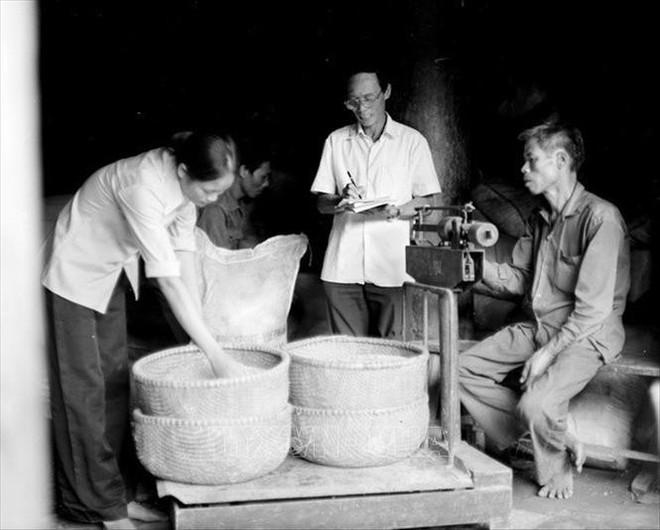

From a food-deficient country, Vietnam has become one of the world’s leading rice exporters, reaching over 9 million tons in 2024. Photos: VNA (left), VGP (right)
The Director of the Statistics Bureau evaluated that this was a successful development period for Vietnam in terms of the decision to switch to a market economy and achieve the goal of curbing inflation, contributing to expanding the GDP scale and strongly transforming the economic structure. The GDP scale at current prices in 2000 was 10.3 times higher than in 1990, putting Vietnam in the group of economies in the region with a high growth rate in the 1990s.
The period 2001-2010 marked a remarkable development, with the economic structure shifting from agriculture to industry – services – agriculture, aiming to become an industrialized country. The economy has undergone real changes in economic thinking with the birth of the Enterprise Law in 2000 and the signing of the Vietnam – US Trade Agreement in 2001. Many industrial development policies have been issued by the Prime Minister. The average GDP growth rate in this period reached 7.12%/year – one of the highest in the history of modern development.
Entering the period 2011-2024, the economic structure continued to transform, in which the service sector accounted for the highest proportion, followed by the industry and construction sector, and the agriculture, forestry and fishery sector accounted for the lowest proportion.
Vietnam in the group of high-growth countries in the world
The Strategy for Socio-Economic Development for the period 2011-2030, with a vision to 2030, has been actively implemented. Policies, projects, the Law on Investment, the Law on Enterprises, the Law on Public Investment, etc., have had a strong impact, creating favorable conditions for production and business activities to be effective. Vietnam has risen to become one of the countries with a globally competitive industrial capacity (CIP) at a fairly high level and is one of the industrial production centers of the region and the world.
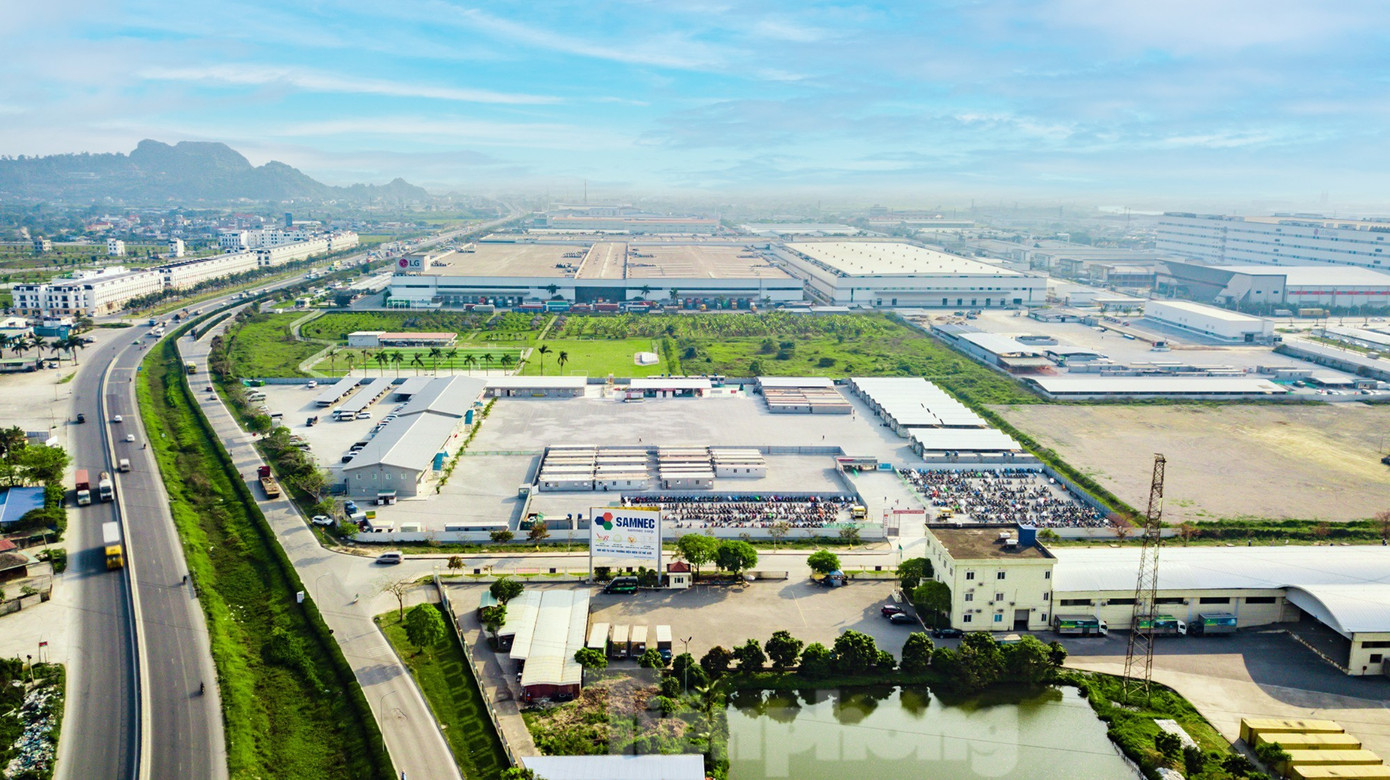
Industrial development creates an important foundation for Vietnam’s economic development. Photo: Loc Lien.
After 40 years, Ms. Huong said that one of the important achievements of economic transformation is that the economic growth rate has always been maintained, even in periods when the economy faced many difficulties and challenges. The macro economy has always been stable, and inflation has been controlled at a suitable level. On average, GDP increases by 6.67% per year, ranking among the countries with high growth rates in the region and the world.
Vietnam has transformed its economic structure from agriculture to industry and services. In 1986, the agro-forestry-fishery sector accounted for up to 36.76% of GDP, now it is only 11.8%; industry – construction and services account for 37.6% and 42.3%, respectively.
Import and export turnover in 2024 reached more than $786 billion, 267 times higher than in 1986, with a trade surplus for 9 consecutive years. Processed products account for 85% of exports. Especially, from a food-deficient country, Vietnam is now one of the world’s leading rice exporters, reaching over 9 million tons in 2024.
“Second Renovation”
Dr. Ha Huy Ngoc, Director of the Center for Research on Policies, Strategies for Local and Territorial Economic Development (Vietnam Institute for Economics and the World), said that after nearly 80 years of nation building and nearly 40 years of renewal, Vietnam has risen strongly, achieving many historically significant development achievements. The whole country now has 423 research organizations, about 4,000 start-up enterprises, along with hundreds of investment funds and incubators. Vietnam ranks 44th out of 133 countries in the Global Innovation Index, with the digital economy accounting for 18.3% of GDP, and the digital industry reaching a revenue of $152 billion. Potential, position and international prestige are increasingly enhanced.
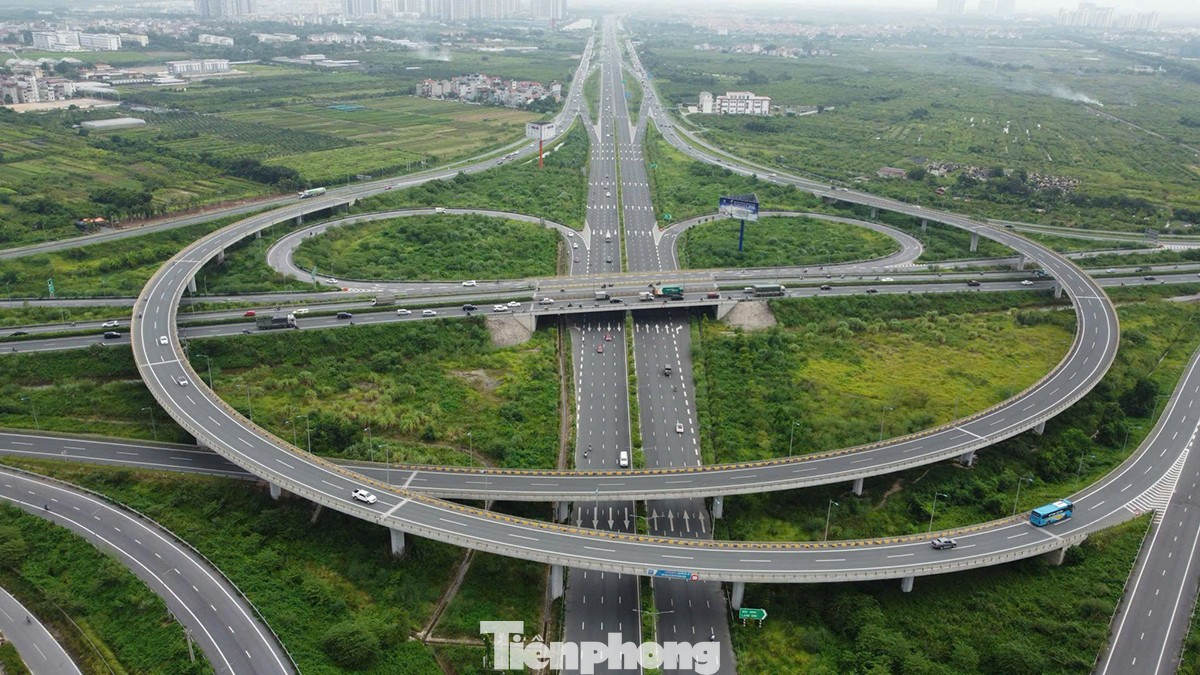
The government aims to have more than 5,000 km of expressways by 2030 and 41 expressways with a total length of more than 9,000 km by 2050. Photo: Nhan Dan.
According to economist Nguyen Bich Lam, if the 1986 renewal was a matter of survival to “rescue” the economy, the 2025 renewal and the following years are prerequisites for Vietnam to realize its aspiration for rapid and sustainable development. To make the “second renovation” successful, Vietnam needs to synchronously reform five areas:
First of all, reform the economic institution, ensuring quality, practicality, and transparency in implementation, thereby eliminating the mechanism of asking and giving, harassment, corruption, and waste… no longer have a place to exist. When the quality of new regulations is well controlled, and there is no policy conflict, it means that there will be no new bottlenecks, and the institution will really create a driving force for development.
Second, build a rule-of-law state that is truly of the people, by the people, and for the people, with the capacity to create development, formulate policies with a strategic vision, effectively govern and serve the people as the most important goal and task in the current political renewal to suit the economic renewal.
Third, comprehensively and fundamentally reform the education system towards “teaching original knowledge”, considering this as the basis for breaking through in science, technology, and autonomous development, reaching out to the world. “It is necessary to build an education that teaches how to create knowledge, not just to learn existing knowledge,” emphasized Mr. Lam.
Fourth, restructure the economy, create new growth momentum from science and technology, innovation, develop in a green, circular direction, and improve national competitiveness.
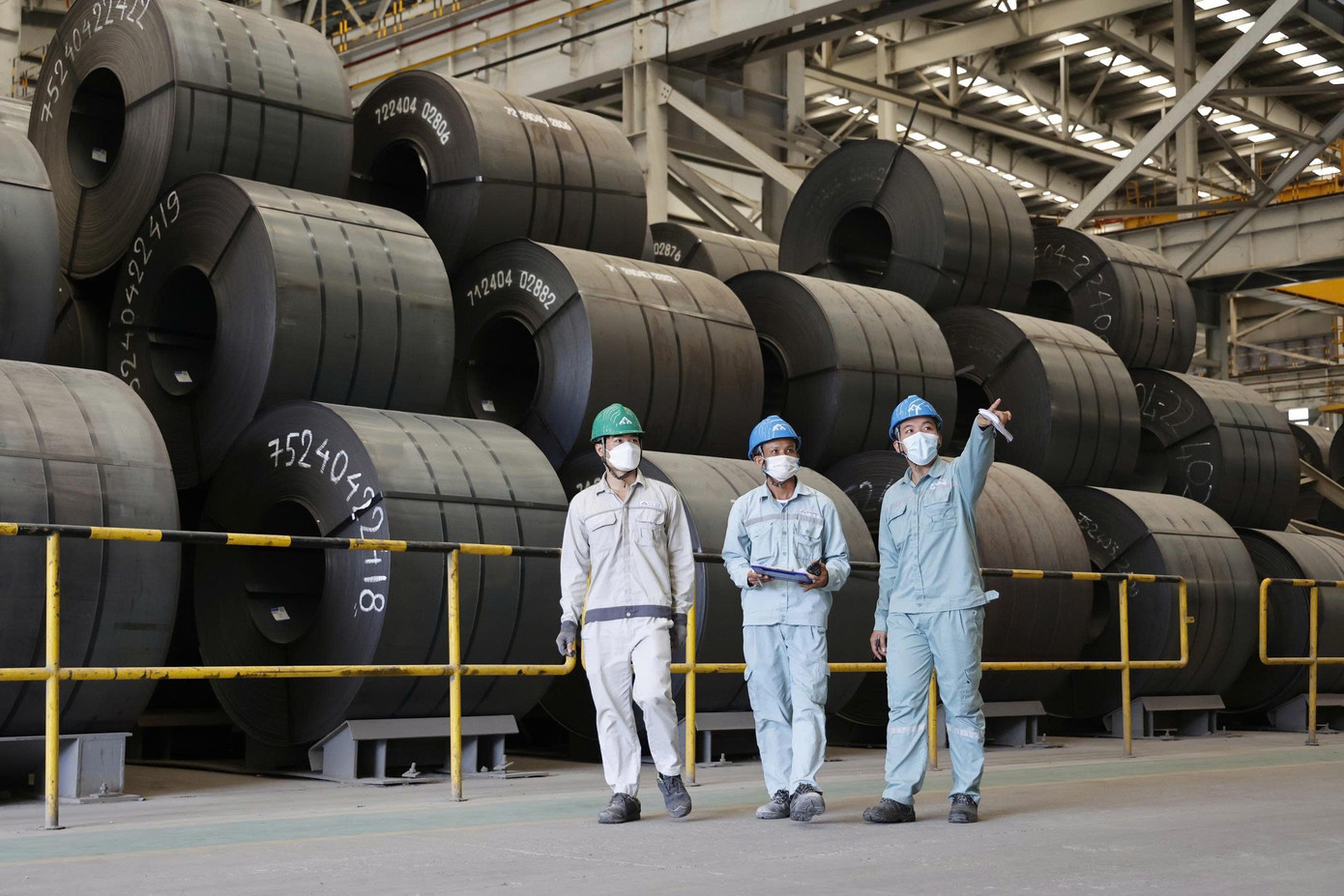
Vietnam aims to become a developing country with a modern industry and upper-middle income by 2030. Photo: Pham Danh.
Finally, create and develop the private economy, and ethnic enterprises become the most important force, the vanguard in development and international economic integration, develop the private economic sector, and turn ethnic enterprises into a pioneer force in the process of global integration.
Mr. Lam emphasized that the achievements and shortcomings in the economic development process have proved a truth: “Renewal is an endogenous requirement, a law of existence and development of the country. Renewal is for the people, by the people, and serves the people as the core; renewal is based on science, justice, and reality as the principle; renewal is to maintain independence, sovereignty, sustainable development, and prosperity as the goal. Achievements are not only measured by the growth rate, scale, and poverty rate of the economy but also reflected in the flexible macroeconomic management capacity, the resilience of the economy in the face of global shocks.”
“In 1986, Vietnam began its renovation process – an endogenous economic and political renovation process, marking the transition from a centrally planned economy to a socialist-oriented market economy. From 1990 to 2010, Vietnam’s economy grew at an average annual rate of 7.3%. Vietnam’s transformation from a centrally planned economy to a market economy and from a very poor country to a lower-middle-income country in less than 20 years has become part of the content in development textbooks.” – Vietnam Development Report 2012 of the World Bank.
Prime Minister Requests SBV to Hasten the Development of a Roadmap to Pilot the Abolition of Credit Room from 2026 Onwards.
The State Bank of Vietnam (SBV) needs to establish standards and criteria for credit institutions to operate effectively and maintain good health. These standards should emphasize the importance of strong governance and management capabilities, adherence to prudential ratios, and high credit quality indicators. Transparency and disclosure are key to ensuring the safety and soundness of Vietnam’s banking system.
Prime Minister Directs SBV to Pilot Removal of Credit Growth Targets from 2026 Onwards
The latest dispatch from the Prime Minister’s office, Directive 128/CD-TTg dated August 6, 2025, is a significant development. It mandates various ministries, sectors, and localities to implement crucial tasks and solutions to boost growth, curb inflation, stabilize the macro-economy, and ensure the broader economic balance.
VinaCapital: Three Key Sectors to Benefit from Vietnam’s Policy Tailwinds
Vietnam is embarking on an era of Doi Moi 2.0, a rapid transformation from policy statements to tangible outcomes. This is evidenced by the 34 laws passed in June 2025, alongside extensive administrative reforms.
The Innovation Renaissance: From Policy to Practice
Vietnam is embarking on an era of Doi Moi 2.0, a rapid transformation from policy statements to tangible outcomes, as evidenced by the 34 laws passed in June 2025, along with far-reaching administrative reforms. In the coming months, VinaCapital anticipates an accelerated pace of infrastructure investment disbursements, particularly in the transportation and energy sectors. Similarly, the real estate sector is expected to continue benefiting from recent policies that unblock stalled projects.



